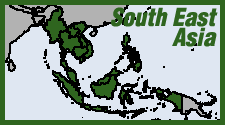 The White House has announced a partial lifting of sanctions on Burma in recognition of progress in its democratic transition. Restrictions are to be dropped on state-owned banks and businesses, although some 100 companies and individuals linked to the armed forces will remain iced. This relaxation comes at the request of longtime democracy advocate Aung San Suu Kyi, who although barred from holding the presidency is effectively the country’s leader following November's elections. But human rights concerns remain—especially around the fate of the Rohingya Muslims, persecuted and made stateless by the military junta that has now (mostly) surrendered power. And the multiple ethnic insurgencies in Burma's opium-producing northern mountains, while receiving less world media attention lately, continue to vex the country.
The White House has announced a partial lifting of sanctions on Burma in recognition of progress in its democratic transition. Restrictions are to be dropped on state-owned banks and businesses, although some 100 companies and individuals linked to the armed forces will remain iced. This relaxation comes at the request of longtime democracy advocate Aung San Suu Kyi, who although barred from holding the presidency is effectively the country’s leader following November's elections. But human rights concerns remain—especially around the fate of the Rohingya Muslims, persecuted and made stateless by the military junta that has now (mostly) surrendered power. And the multiple ethnic insurgencies in Burma's opium-producing northern mountains, while receiving less world media attention lately, continue to vex the country.







Recent comments
3 weeks 1 day ago
6 weeks 6 days ago
10 weeks 6 days ago
11 weeks 5 days ago
21 weeks 5 days ago
25 weeks 5 days ago
26 weeks 5 days ago
26 weeks 6 days ago
47 weeks 6 days ago
52 weeks 13 hours ago